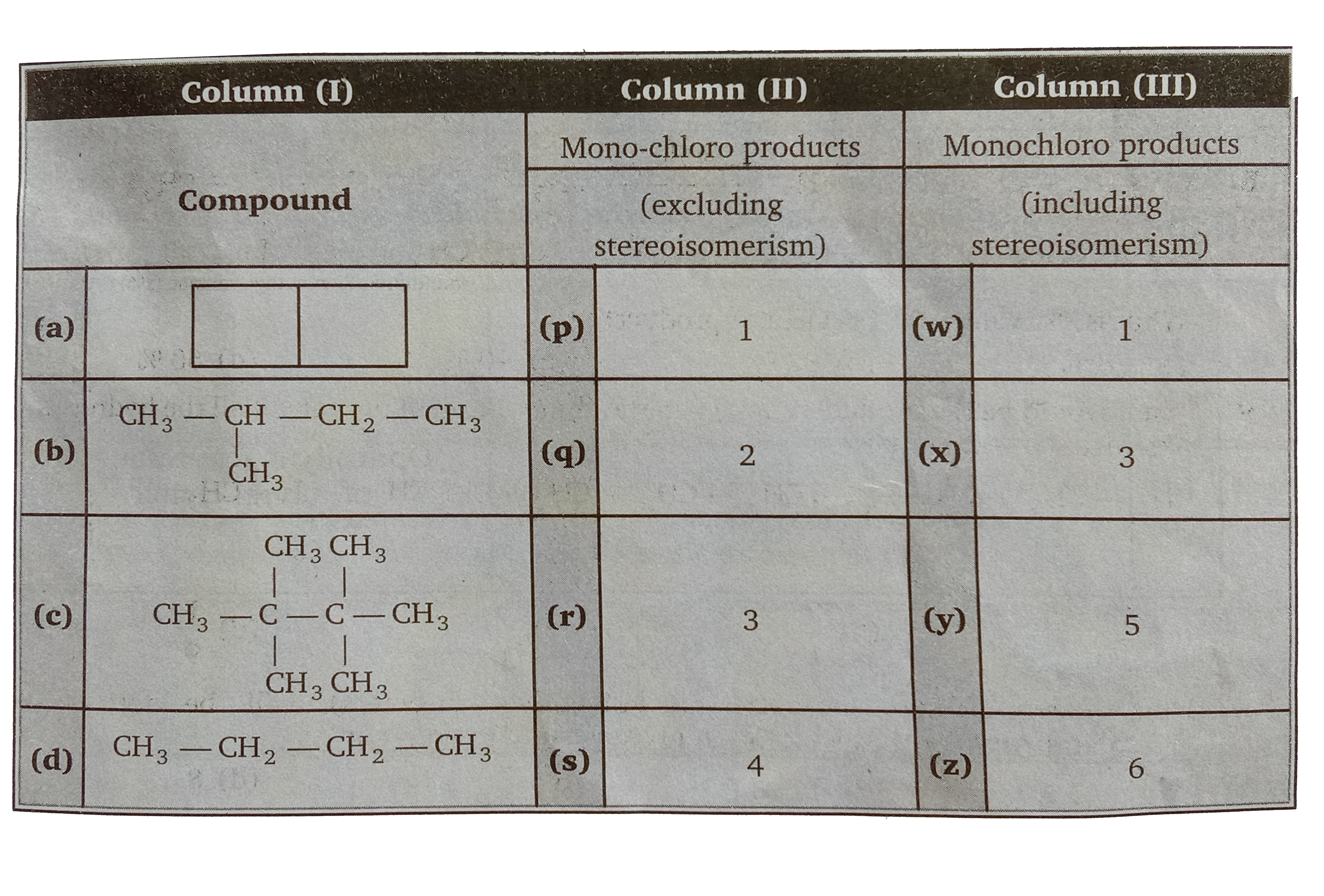Determine the correct match for the given columns.
Column IColumn II(a)Hyperparathyroidism(i) Saltwater balance(b) Oxytocin(ii) Milk let down (c) Aldosterone(iii) Demineralization(d) Luteinizing hormone((iv) Maintains corpus luteum
a - ii , b - I , c - iii , d - iv
a - iii, b - ii , c - iv , d - iv
a - ii , b - iii , c - iv , d - i
a - i , b - iv , c - iii , d - ii
The correct Answer is:B
To determine the correct match for the given columns, we will analyze each hormone in Column I and its corresponding function in Column II.
1. Hyperparathyroidism:
- This condition is related to the parathyroid hormone (PTH), which is responsible for regulating calcium levels in the blood.
- In hyperparathyroidism, there is an excess secretion of PTH, leading to increased calcium levels and causing demineralization of bones.
- Match: (a) Hyperparathyroidism → (iii) Demineralization.
2. Oxytocin:
- Oxytocin is produced by the posterior pituitary gland and is primarily involved in the process of lactation.
- Its main function is to stimulate the ejection of milk from the mammary glands during breastfeeding.
- Match: (b) Oxytocin → (ii) Milk let down.
3. Aldosterone:
- Aldosterone is a hormone produced by the adrenal cortex and is classified as a mineralocorticoid.
- It plays a crucial role in regulating sodium and potassium levels in the body, thereby maintaining saltwater balance.
- Match: (c) Aldosterone → (i) Saltwater balance.
4. Luteinizing Hormone (LH):
- LH is produced by the anterior pituitary gland and is essential for regulating the menstrual cycle and ovulation in females.
- It is responsible for maintaining the corpus luteum after ovulation.
- Match: (d) Luteinizing hormone → (iv) Maintains corpus luteum.
Summary of Matches:
- (a) Hyperparathyroidism → (iii) Demineralization
- (b) Oxytocin → (ii) Milk let down
- (c) Aldosterone → (i) Saltwater balance
- (d) Luteinizing hormone → (iv) Maintains corpus luteum
Final Answer:
The correct matches are:
- (a) → (iii)
- (b) → (ii)
- (c) → (i)
- (d) → (iv)
Thus, the correct option is 2nd option.
- This condition is related to the parathyroid hormone (PTH), which is responsible for regulating calcium levels in the blood.
- In hyperparathyroidism, there is an excess secretion of PTH, leading to increased calcium levels and causing demineralization of bones.
- Match: (a) Hyperparathyroidism → (iii) Demineralization.
- Oxytocin is produced by the posterior pituitary gland and is primarily involved in the process of lactation.
- Its main function is to stimulate the ejection of milk from the mammary glands during breastfeeding.
- Match: (b) Oxytocin → (ii) Milk let down.
- Aldosterone is a hormone produced by the adrenal cortex and is classified as a mineralocorticoid.
- It plays a crucial role in regulating sodium and potassium levels in the body, thereby maintaining saltwater balance.
- Match: (c) Aldosterone → (i) Saltwater balance.
- LH is produced by the anterior pituitary gland and is essential for regulating the menstrual cycle and ovulation in females.
- It is responsible for maintaining the corpus luteum after ovulation.
- Match: (d) Luteinizing hormone → (iv) Maintains corpus luteum.
- (a) Hyperparathyroidism → (iii) Demineralization
- (b) Oxytocin → (ii) Milk let down
- (c) Aldosterone → (i) Saltwater balance
- (d) Luteinizing hormone → (iv) Maintains corpus luteum
The correct matches are:
- (a) → (iii)
- (b) → (ii)
- (c) → (i)
- (d) → (iv)
Topper's Solved these Questions
Similar Questions
Knowledge Check
Match the column I and II
Column IColumn II(a) Apocarpous(i) Papaver(b) Syncarpous(ii) Michellia(c) Epiphyllous(iii) Cashew(d) Cotyledon(iv) AloeAa – i, b–ii, c–iii, d –ivBa – ii, b–i, c–iv, d –iiiCa – iv, b–iii, c–ii, d –iDa – iv, b–i, c–iii, d –iiMatch the column I with column II
Column IColumn II(A) Thylacine (i) Russia (B) Dodo (ii) Mauritius (c ) Quagga(iii) Australia (D) Steller's sca cow (iv) AfricaAa (ii), b (iii), c (i), d(iv)Ba(iv), b(i), c(ii), d(iii)Ca(iii), b(iv), c(ii), d(i)Da(iii), b(ii), c(iv), d(i)Match the items given in Column-I with those in Column II and select the correct option given below :
Column IColumn II(a)Eutrophication(i)UV-B radiation(B)Sanitary landfill(ii)Deforestation(c)Snow blindness(iii)Nutrient enrichment(d)Jhum cultivation(iv)Waste disposalAabcdiiiiviiiBabcdiiiiviiiCabcdiiiiiviiDabcdiiiiiiiv
Match the items given in column I with appropriate items (one or more ) in column II.
Column IColumn II(i)Pineal gland(a) Stimulates sevretion of milk(ii)Oxytocin(b)Source of melatonin(iii)Vasopressin(c)Diabetes mellitus(iv)Insulin(d)Diabetes insipidus(v)Luteinizing hormone(e)Ovulation(f)Glycogenesis
View SolutionMatch column I with column II and select the correct option from the given codes.
Column IColumn IIA.Rhinoceros(i)High endemismB.In situ conservation(ii)Off site conservationC.Ex situ conservation(iii)On site conservationD.Hotspots(iv)Kaziranga
View SolutionMatch column I with column II and select the correct option from given codes.
Column IColumn IIA. Marginal(i) Sunflower, marigoldB. parietal(ii) PeaC Axile(iii) Mustard,ArgemoneD. Free central(iv) Hibiscus,ArgemoneE. Basal(v) Dianthus, Primorse
View SolutionMatch column I with column II and select the correct option from the given codes.
Column IColumn IIA. Pedicel(i) Reduced leafB. Peduncle(ii) Stalk of the flowerC. Bract(iii) Stalk of the leafD. Petiole(iv) Inflorescences axis
View SolutionMatch Column I with column II
Column IColumn II(a)Bilirubin and biliverdin(i)Parotid(b)Hydrolysis of starch(ii)Bile(c)Digestion of fat(iii)Lipases(d)Salivary gland(iv)Amylases
View Solution


